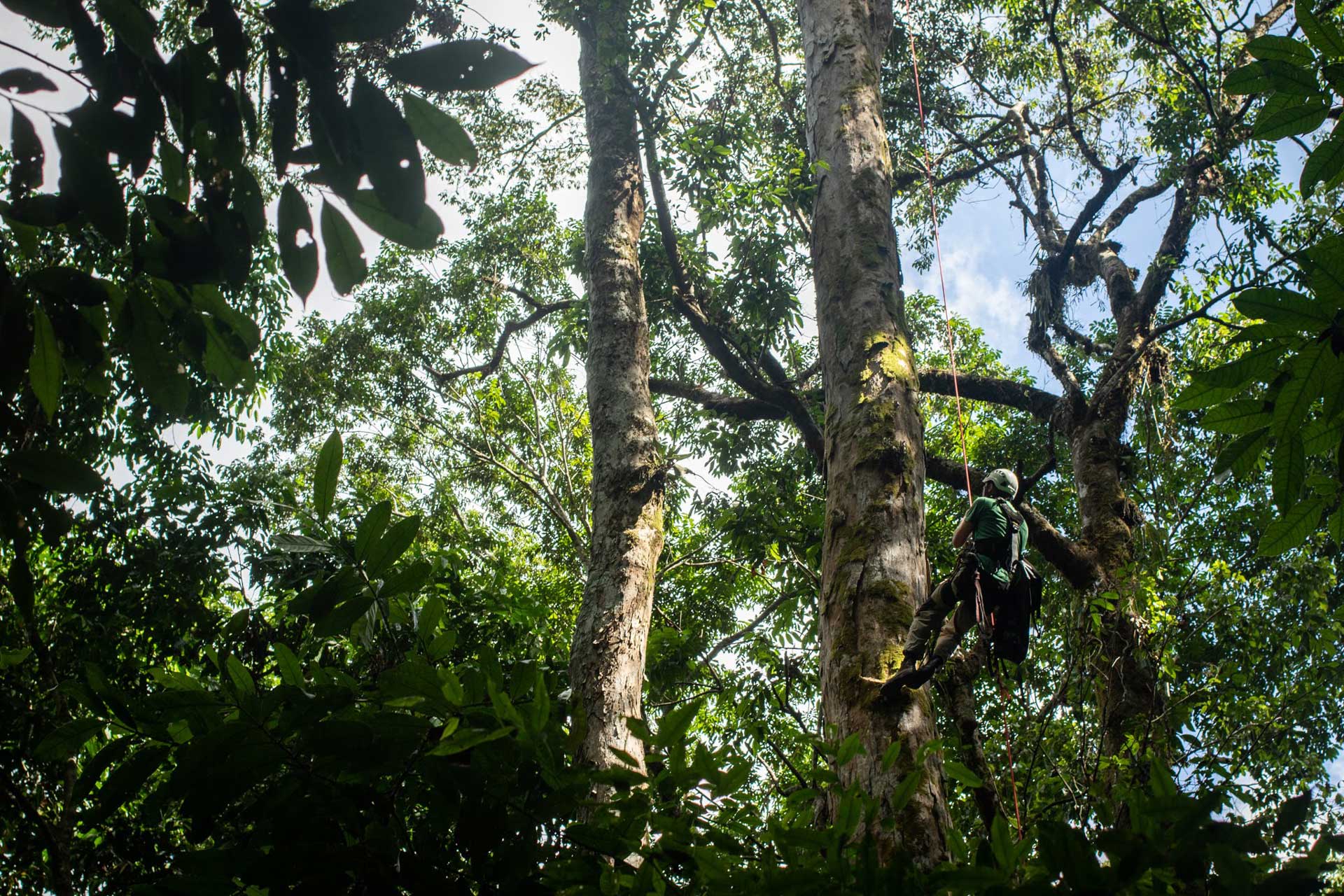
Calophyllum longifolium
Calophyllum longifolium
Cedro María, María
Audio
English Audio
Audio en Español
Plant Story
This cedar reaches around 25 meters tall and has a yellow-toned grooved bark. Its fruits are eaten by bats and the wood is commonly used for construction. It is similar to Calophyllum brasiliense, but with much larger leaves. It also resembles Calophyllum inophyllum, an introduced species that doesn’t exceed 8 meters in height and is often cultivated or found near beaches. This cedar reaches around 25 meters tall and has a yellow-toned grooved bark. Its fruits are eaten by bats and the wood is commonly used for construction. It is similar to Calophyllum brasiliense, but with much larger leaves. It also resembles Calophyllum inophyllum, an introduced species that doesn’t exceed 8 meters in height and is often cultivated or found near beaches.
Historia de la planta
El Calophyllum longifolium es un árbol de hasta 25 metros de altura, llamativo por su corteza fisurada con tonalidades amarillas. Sus frutos son consumidos por murciélagos y su madera es bastante utilizada para construcción. Es parecido a la otra especie de cedro maría (Calophyllum brasiliense), pero esta tiene hojas mucho más grandes, también a Calophyllum inophyllum, pero esta última es una especie introducida de menor tamaño (8 m) y suele estar cultivada o cerca de las playas.
Plant details
Plant Information
Botanic Name:
Calophyllum longifolium
Common name(s):
Cedro María, Cedro María, María
Family
Calophyllaceae
Phenology
Flowering Months:
November
Fruiting Months:
January
Conservation
IUCN category:
Least concern / Menor preocupación (LC)
CITES:
Interesting Links
Plant Locations
Cedro María
Plant details
Audio
English Audio
Audio en Español
Story / Historia
Plant Story
This cedar reaches around 25 meters tall and has a yellow-toned grooved bark. Its fruits are eaten by bats and the wood is commonly used for construction. It is similar to Calophyllum brasiliense, but with much larger leaves. It also resembles Calophyllum inophyllum, an introduced species that doesn’t exceed 8 meters in height and is often cultivated or found near beaches. This cedar reaches around 25 meters tall and has a yellow-toned grooved bark. Its fruits are eaten by bats and the wood is commonly used for construction. It is similar to Calophyllum brasiliense, but with much larger leaves. It also resembles Calophyllum inophyllum, an introduced species that doesn’t exceed 8 meters in height and is often cultivated or found near beaches.
Historia de la planta
El Calophyllum longifolium es un árbol de hasta 25 metros de altura, llamativo por su corteza fisurada con tonalidades amarillas. Sus frutos son consumidos por murciélagos y su madera es bastante utilizada para construcción. Es parecido a la otra especie de cedro maría (Calophyllum brasiliense), pero esta tiene hojas mucho más grandes, también a Calophyllum inophyllum, pero esta última es una especie introducida de menor tamaño (8 m) y suele estar cultivada o cerca de las playas.
Plant Information
Botanic Name
Calophyllum longifolium
Common name(s)
Cedro María, María
Family
Calophyllaceae
Phenology
Flowering Months
November
Fruiting Monts
January
Conservation
IUCN category
Least concern / Menor preocupación (LC)
CITES
Interesting Links
Plant Locations
Post A Comment
You must be logged in to post a comment.








No Comments